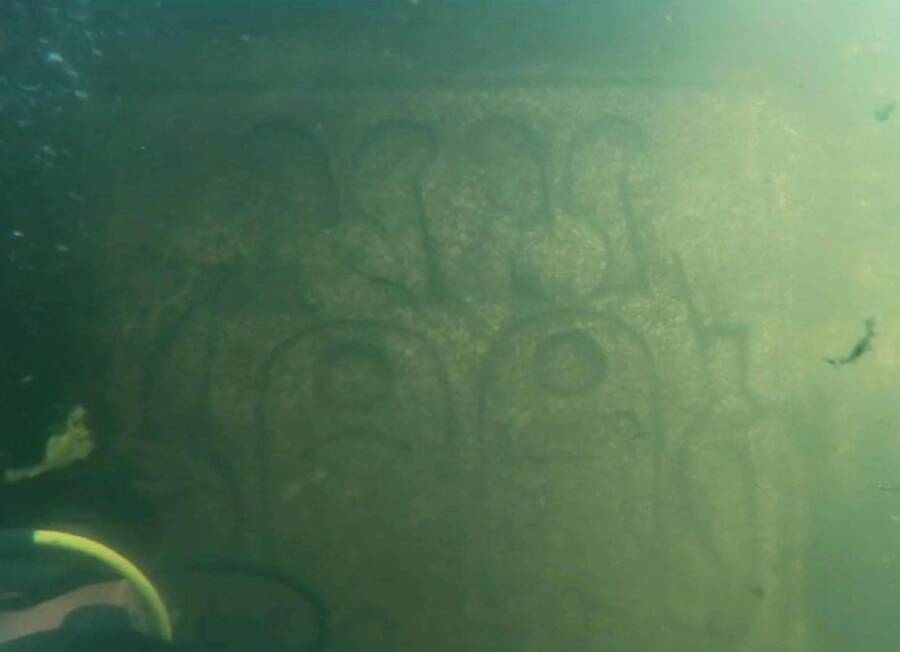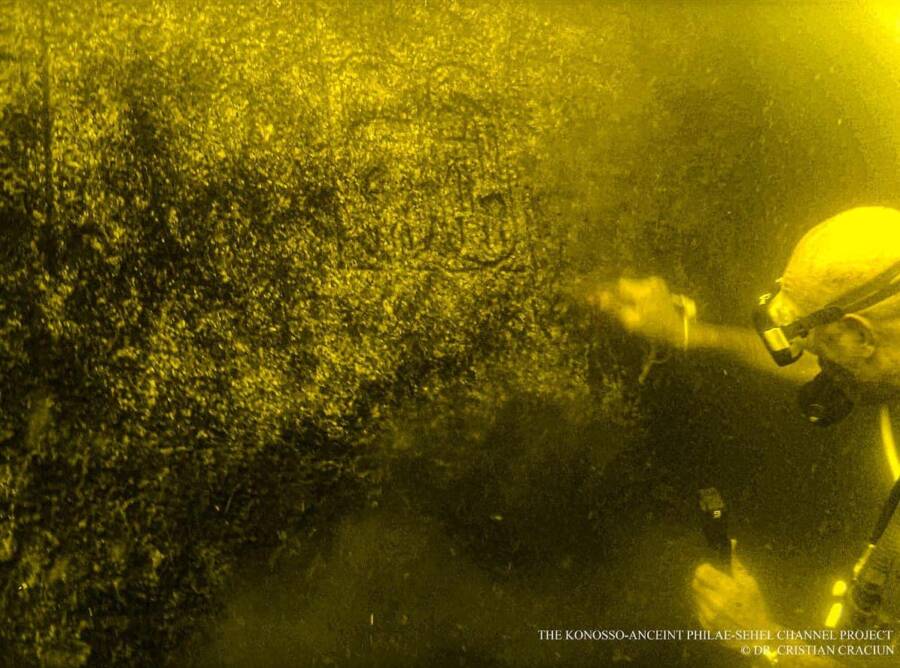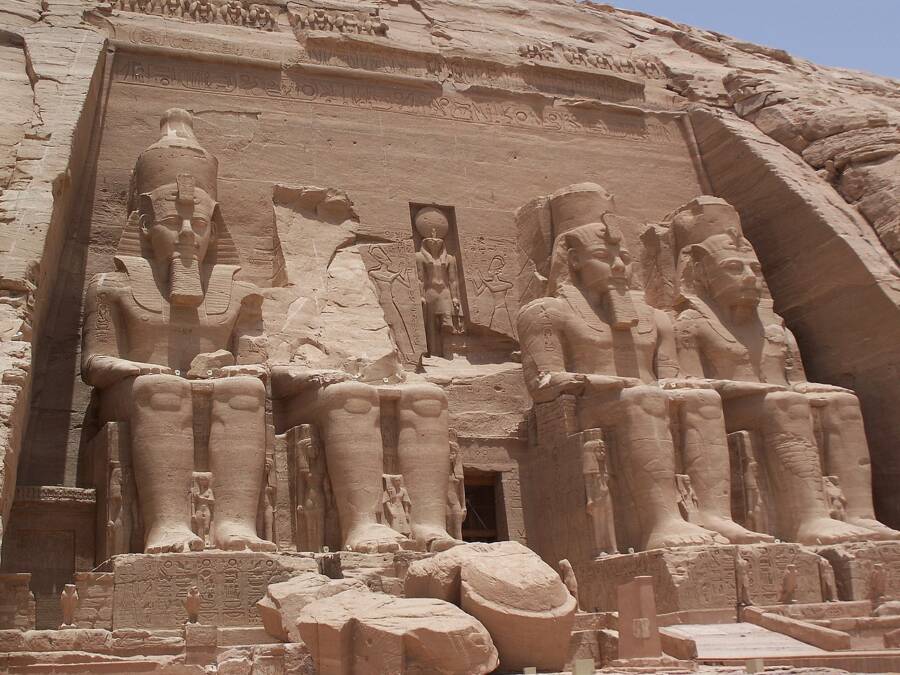The carvings depicting pharaohs like Amenhotep III and Thutmose IV were submerged during construction of the Aswan Dam in the 1960s.

Ministry of Tourism and AntiquitiesThe carvings near Aswan depict several ancient Egyptian pharaohs, including Amenhoteb III, Tatmas IV, Psamtik II and Apries.
Viewed from above the surface, the Nile River is undoubtedly majestic. But beneath the surface, the river also holds precious pieces of ancient Egyptian history. A French-Egyptian team has just discovered a number of rock carvings submerged in the river near Aswan that describe pharaohs who reigned several millennia ago.
Information is still emerging about this exciting discovery, but it’s certain to add to Aswan’s legacy as one of the preeminent places filled with ancient Egyptian treasures.
The Rock Carvings Of Pharaohs Found In The Nile River
According to a statement from the Egyptian Ministry of Tourism and Antiquities, the French-Egyptian archaeological team came across the rock carvings during a dive in Aswan. They had long known that something of historical importance lurked beneath the Nile in that area. When the Aswan Dam was built during the 1960s, the construction submerged a number of archaeological treasures, despite the best efforts of UNESCO to save as many of the artifacts as possible.
As the statement notes, this is the first time that the rock carvings have been seen since the 1960s, and thus they have “never been studied before.”

Ministry of Tourism and AntiquitiesAn underwater archaeologist with one of the rock carvings, which had been submerged since the construction of the Aswan Dam in the 1960s.
The rock carvings hold “new historical information about the reign of King Tatmas IV and King Amenhotab III” and depict “a number of paintings, carvings, and miniatures of the pharaohs Amenhoteb III, Tatmas IV, Psamtik II and Apries,” according to the press release.
These ancient pharaohs ruled during the 18th and 26th dynasties. King Tatmas IV reigned between 1397 B.C.E. and 1388 B.C.E., and was succeeded by King Amenhotab III, who reigned from 1388 B.C.E. until 1351 B.C.E. Similarly, Psamtik II reigned between 595 B.C.E. and 589 B.C.E., and was succeeded by Apries, who reigned from 589 B.C.E. until 570 B.C.E.

Captmondo/Wikimedia CommonsA depiction (not from the rock carvings) of King Tatmas IV giving an offering to the Sphinx from circa 1500 to 1390 B.C.E.
Though the Egyptian government did not release many further details about the rock carvings, it did explain that the archaeological team carefully documented them using the latest technology.
“During its work the mission has used all the modern techniques of diving, archaeological scanning, photography, underwater video and photogrammetry as well as archaeological drawing, in order to identify and document the remaining rock carvings,” the statement explained.
Moreover, this new discovery is just one part of Aswan’s rich archaeological heritage.
The Archaeological Treasures Of Aswan, Egypt

Library of CongressThe ruins of a Roman-built pier as seen in Aswan, Egypt circa 1856-1860.
Aswan played an important role in the history of ancient Egypt. Perched on the country’s southern border, it served as a defensive site against invaders. Aswan also had a number of quarries that provided granite for some of Egypt’s monuments, obelisks, and even the pyramids.
The city is also home to a number of important temples, including Abu Simbel, which includes four huge statues of the pharaoh Ramesses II (1303 to 1213 B.C.E) and the Philae temple complex, where the last known Egyptian hieroglyphic inscription was written in 394 C.E.

Than217/Wikimedia CommonsAbu Simbel, with its huge statues of Ramesses II, is one of the many historical treasures located in Aswan.
As such, the rock carvings — though submerged for decades in the Nile River — are another piece of Aswan’s larger fascinating history. The paintings, carvings, and miniatures documented by archaeologists during the recent dives tell a story that started thousands of years ago, and one that is only continuing to unfold.
After reading about the ancient carvings found submerged in the Nile River, go inside the curious debate over who really built the pyramids and how they built them. Then, look through the evidence about what Cleopatra really looked liked.





